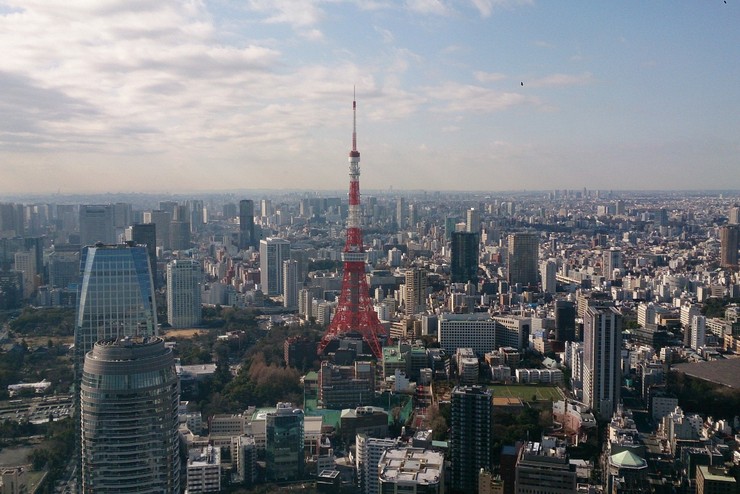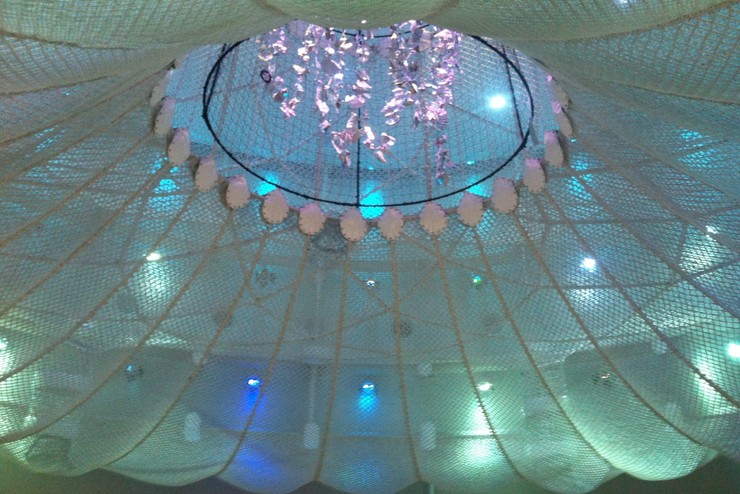
Rebecca Shoesmith
Tokyo skyline
Elevate - our innovation camp looking at the future of childhood play -was an incredible week which brought together 12 talented, curious creatives from seven countries around the world.
We began the week in Japan with a play safari, sending two groups whizzing across Tokyo to experience various aspects of play from the corporate to the community driven. One of the major themes that came out of the visits and stuck with us throughout the week was structured vs unstructured play – what is the best approach and is there a best approach to inspire creativity?
Young kids show skill and responsibility
For example, one of the groups visited Hanegi Play Park which is a community built and managed park built out of wood. Run by the community for 35 years, this concept has now spread to four other areas in Tokyo. The Play Parks consciously appear un-designed and unfinished. Nails stick out of the structures and children are encouraged to dig holes with sharp spades and build fires. The first reaction by some of the fellows was that letting their children play there would give them a heart attack! However, surprisingly there was an incredibly low accident rate with only approximately 10 a year when nearly 300 children play there a day. As Clare Reddington, Creative Director of Watershed reflects in her blog from the Camp, Hanegi is an example of where ‘even young kids show skill and responsibility, developed through the trust that is shown to them’.

Paul Drury
Hanegi Play Park
Are we too cautious in letting our children play?
There is a plethora of research on how play is changing for children and some pretty shocking statistics about the amount of time that kids are playing and where they play. In a presentation by fellow Bronwyn Cumbo we learnt that in two generations 60% of children are spending less time outdoors and their play range has decreased from 12km to 300 metres. A scary thought.
Another example of creating a space for free play was Galaxcity. Galaxcity is an indoor play space which involves everything from giant hanging nets to climbing walls. This was an interesting contrast to Hanegi in the way that children and adults were both encouraged to play and the group felt that this really created an environment that celebrated childhood. Although Kazuo Kurokawa, Director of Galaxcity who took the group round had great delight in showing them a giant net which only children could seem to navigate. There was a pride in having created something that adults couldn’t do as well as children.

Bronwyn Cumbo
Galaxcity
Contrast this to Kidzania in Tokyowhich is a fake indoor city for children where they can take on different job roles from a fireman to a beauty therapist or a tour guide. Children earn ‘money’ for working and have a choice to either buy experiences such as a makeover or spend it on souvenirs or food. One boy and girl a day can even get married if they pay for it. Initially I thought this sounded like a really fun idea for children but there is a darker side where all professions are sponsored by brands on a first come first served basis, for example if you chose to enter the pizza profession you would not just be making pizza you would be making Pizza-La pizza (a major pizza chain in Japan). Interestingly the fellows reflected there is no space for children to create their own jobs, instead they have to follow a scripted experience through pre-designed (and branded) careers. How relevant in this in today’s world? At an evening of presentations at Impact HUB Tokyo the following day Youka Watanabe, Director of FabLab Kamakura shared that 65% of today’s students will end up doing jobs that haven’t even been invented yet.

Bronwyn Cumbo
Kidzania Tokyo
Questioning play- what’s our role as adults?
It is hard to capture the debate that followed when the fellows shared their experiences of their respective play safaris but here are some questions to ponder: Should play be structured or unstructured? Is it important to have a balance of play where children are free to be imaginative and play which prepares children for adulthood? What is creativity and how does that intersect with play? Is making something following instructions really creativity?
What next?
Watch this space for more blogs about the Camp from the fellows. They are currently accessing various professional development opportunities to guide them on the next stages in their journeys, including an online course provided by our knowledge partner Goldsmiths, University of London and a funding opportunity provided by the Lien Foundation.